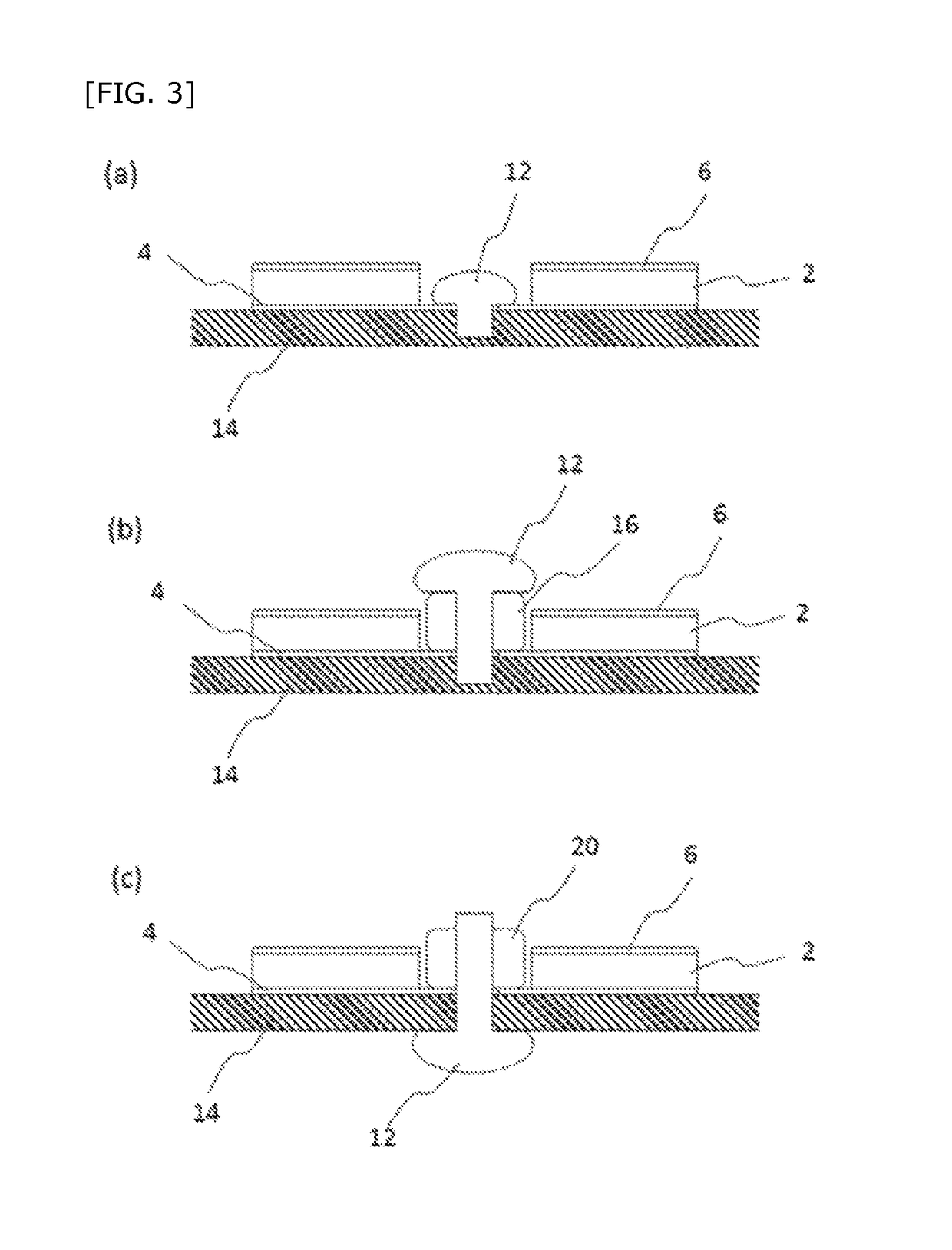Protection element
a protection element and element technology, applied in the direction of resistor details, positive temperature coefficient thermistors, coupling device connections, etc., can solve the problems of contact points in the bimetal element deterioration, no longer working as intended, resin surrounding the cigarette socket will melt before the temperature fus
- Summary
- Abstract
- Description
- Claims
- Application Information
AI Technical Summary
Benefits of technology
Problems solved by technology
Method used
Image
Examples
Embodiment Construction
[0020]The following is a detailed explanation of the protective element in an embodiment of the present invention with reference to the drawings.
[0021]The protective element 1 in the embodiment of the present invention has the structure shown in FIG. 1 and FIG. 2. More specifically, the protective element 1 has a PTC element 2, a first electrode 4, and a second electrode 6 which are layered and ring-shaped. In other words, each element has an opening passing through the element in the thickness direction, the center of the round opening in the first electrode 4 and the second electrode 6 is positioned so as to be aligned with the center of the opening in the PTC element 2 in the axial direction, and the first electrode 4, the PTC element 2, and the second electrode 6 are stacked on each other in this order. In other words, the three round openings in FIG. 1 form concentric circles.
[0022]The inner diameter of the first electrode 4 is smaller than the inner diameter of the PTC element...
PUM
 Login to View More
Login to View More Abstract
Description
Claims
Application Information
 Login to View More
Login to View More - R&D
- Intellectual Property
- Life Sciences
- Materials
- Tech Scout
- Unparalleled Data Quality
- Higher Quality Content
- 60% Fewer Hallucinations
Browse by: Latest US Patents, China's latest patents, Technical Efficacy Thesaurus, Application Domain, Technology Topic, Popular Technical Reports.
© 2025 PatSnap. All rights reserved.Legal|Privacy policy|Modern Slavery Act Transparency Statement|Sitemap|About US| Contact US: help@patsnap.com



